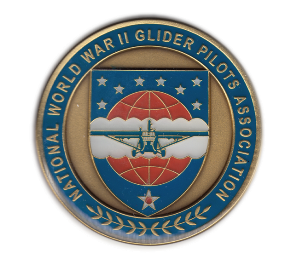TRAINING VIDEOSPart 2 LOADING EQUIPMENT IN THE CG-4ABasic Training of Glider-borne Troops: Part 2Circa 1943 Training — CG–4A Glider This is a film not showing Horsa gliders but CG–4A gliders. The CG–4A water landing demonstrations at Laurinburg–Maxton in August 1943. The first water landing tests were done a month earlier, first part of July 1943, at East Lake, Indiana. This is a U.S. Army film/National Archives. We added the music and put the film sequence in the correct order. (2:13)Published on April 11, 2018 WW2 Second World War Military Gliders Airspeed Horsa Invasion Glider. (4:12) | ||
OPERATION VIDEOSThe following links are focus on missions. NORMANDYU.S. Gliders in NormandyPublished on Mar 10, 2010 WWII MARKET GARDENOPERATION “MARKET” The Airborne Invasion of Holland, September 17, 1944 Full feature NWWIIGPA documentary. (0:37:46)Operation Market Garden -- E.T.O. Airborne Operations Published on Dec 8, 2011 BASTOGNE-OPERATION REPULSEBastogne Resupplied on a Wing and a Prayer Full feature documentary. (0:40:36)Published on Aug 18, 2014 WWII RHINE CROSSING - VARSITYDangerous landing in a military glider, type CG-4A The first part from the 0:00 to the 1.23 minute mark shows the glider mission to Remagen. This was a two glider evacuation operation. These two gliders were the first to land on the east side of the Rhine River. The operation was flown on March 22, 1945. Besides the evacuation of wounded, the gliders brought in medical supplies. The second part, from the 1.23 minute mark to the end, shows the landing at Wesel, the Rhine Crossing, also known as Operation Varsity. The date is 24 March 1945. The chalk number #14 glider carried a jeep with medics. During the landings, the majority of the landing zones the gliders were subjected to German small arms fire. In the film they are driving the jeep out after the enemy fire has been eradicated. If the men are from the 224th Medical Company (who were flown over with approximately 40 gliders and lost the most men of all the units), then this is one of the 48 gliders in Serial A-20 and flown by 99th Troop Carrier Squadron, 441st Troop Carrier Group. The pilots of that glider would be 2nd Lt. Norman J. THOMSON and F/O Elliott B. WEISS. Lt. Thomson wrote in his report, Received intense small arms enemy fire on down wind leg. Landed and was under fire by ground forces. Co-pilot shot after leaving glider. Sadly, F/O WEISS died of his wounds. Lt. THOMSON was also hit but the bullet ricocheted off his helmet. At the 2.24 minute, one of the B-24 bombers fly over. These were dropping supplies for the airborne troopers.
If recalling correctly, the last glider visible is a 441st Troop Carrier Group glider.
This film can be found with all the videos pertaining to the glider operations on the NWWIIGPA website. --Research by Hans den Brok and Patricia Overman (02:46) | ||
SNATCHING - GLIDER PICKUPThe following links are Troop Carrier related videos. Snatching CG–4A Glider(2:13) Glider Pickup at Eindhoven YouTube showing pickup in Holland after Market-Garden (2:13)Gliders 1944 This film is a mix of films which could be 1943, 1944, and 1945. At 0:45 . At 1:44 thru 1:53 is an excellent demonstration of how a glider pilot uses his skids to stop the glider. If you don’t blink you will see a CG–13! At 1:15 and 1:16 for a split second you can see a CG-13 being snatched along with the CG–4A. Demonstrations of what a glider can be used for and some snatches of gliders in the end. (2:18)WW2 Second World War Military Gliders Waco CG–4A CG = Cargo Glider. | ||
TODAY'S ACTIVITIESNinety-Fourth Flying Traning Squadron, Air Force Academy: | ||

